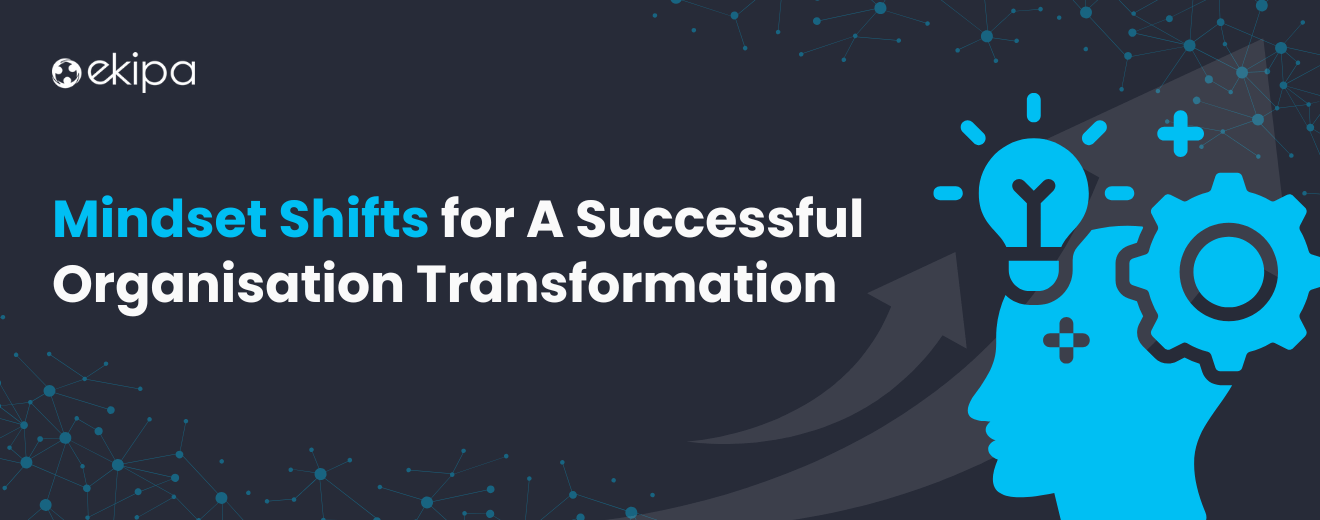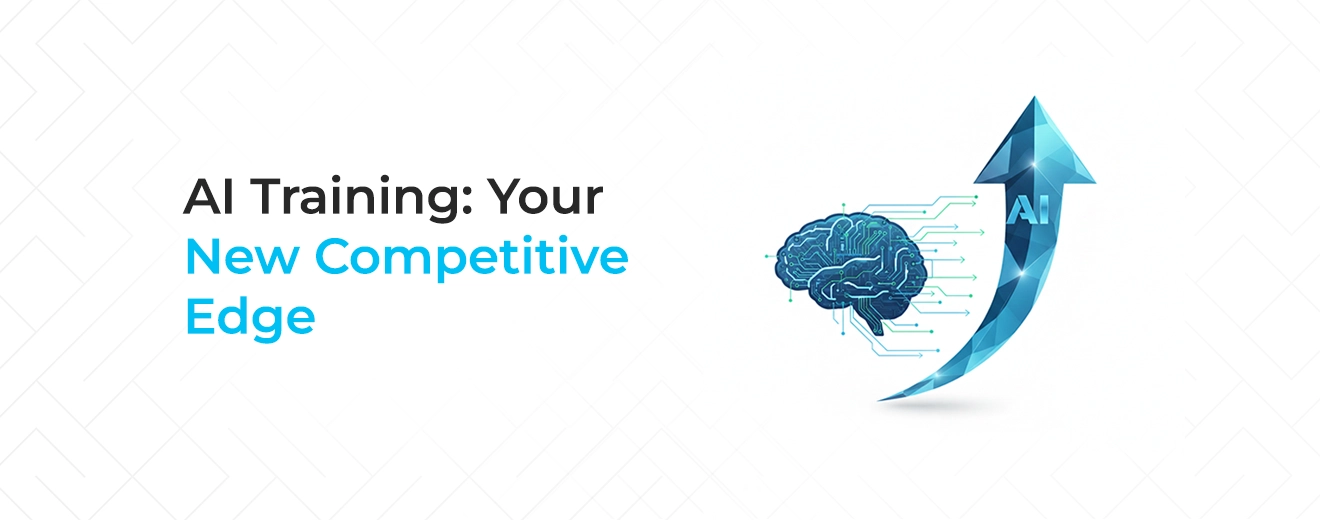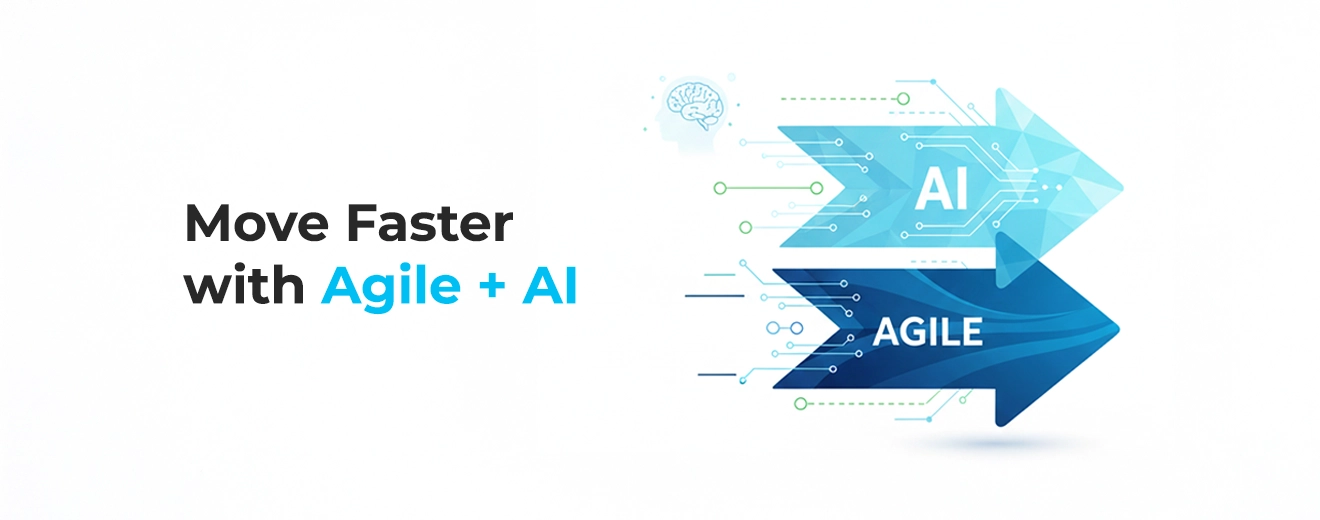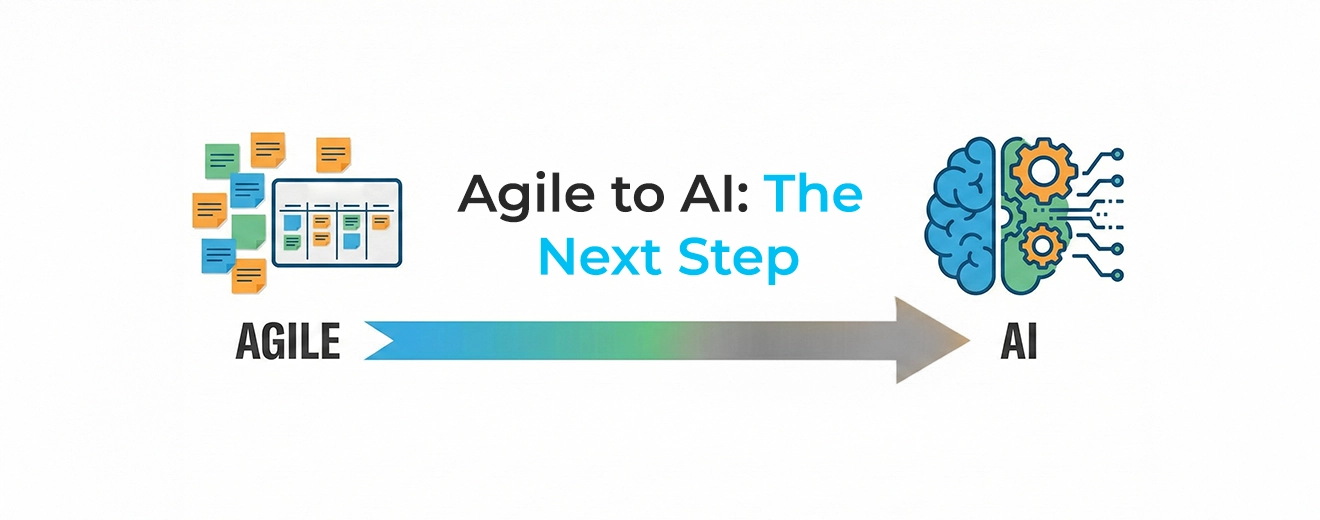Organisational transformation is much like preparing for a triathlon—it’s demanding but deeply rewarding.
Just as triathletes must adapt to different stages of their race, businesses face diverse phases of change, each requiring a unique mindset. Success in organisational transformation comes from building resilience, adaptability, and the ability to navigate challenges beyond the comfort zone.
Successful transformations demand preparation, adaptability, and a willingness to push beyond comfort zones, much like a triathlete who must prepare for different terrains and their unique challenges.
In this article, we explore six critical mindset shifts for successfully guiding an organisation through its transformative journey. These shifts form the foundation of success, much like a triathlete’s mindset is key to conquering open water, long roads, and rugged trails.
From Control to Empowerment: Why Leaders Must Trust Their Teams
The first crucial mindset shift is moving from control to empowerment. In a traditional hierarchical company, relinquishing control is often the leader’s biggest challenge. The “command and control” approach—where decision-making flows from the top—may work in emergencies or highly structured environments, but it falters in today’s dynamic, complex, and increasingly interdependent business landscape.
Transformations thrive on trust and autonomy. To empower teams, leaders must trust those closest to the coal face and customer to make decisions, innovate, and own the outcomes. This shift towards empowerment drives faster decision-making, encourages innovation, and allows teams to align with organisational goals while developing a culture of psychological safety.
When employees have autonomy, they feel a sense of ownership, enabling them to take calculated risks and explore creative solutions. This approach enhances problem-solving while boosting employee engagement and satisfaction.
Related: Crafting a Successful Digital Transformation Strategy for Your Business
Failing Fast vs. Fear of Failure: How a Growth Mindset Fuels Innovation
To transform successfully, organisations must overcome the fear of failure and embrace a culture of experimentation. In an environment where agile ways of working are enabled, every failure becomes an opportunity to learn and improve.
Consider the example of Spotify, which has a strong culture of experimentation. By empowering teams to iterate quickly, fail fast, and learn, the company has built a continuously evolving product that meets the needs of millions of users worldwide. Such a growth mindset allows organisations to remain adaptable, learning from failures and pushing innovation forward.
“At Spotify, we’ve been exercising our experimentation muscle for more than 10 years. We now have over 300 teams running tens of thousands of experiments annually. Experimentation is integral to the way we develop the Spotify experience — but it’s a lot more than just running A/B tests to find the winning ideas.” – Spotify
A growth mindset is crucial in an organisational transformation enabled by Agile practices because it encourages iterative development, enabling teams to adjust quickly to customer feedback and market demands. Leaders who foster this mindset cultivate an environment where innovation thrives and employees can experiment without fear.
From Silos to Swim Lanes: Customer-Centricity Over Internal Silos
Steve Jobs once said, “You’ve got to start with the customer experience and work backward to the technology.” This principle holds for organisational transformation as well.
Yet, too often, companies organise their operations around internal departments creating silos of specialisms that impede collaboration and innovation. Real organisational transformation starts by focusing on the customer and breaking down these internal barriers.
Agile’s iterative approach, which includes frequent feedback loops with customers, prioritises customer-centricity. Customer success becomes a responsibility shared by all teams, not just one department. Every team must align its work with the customer’s needs and outcomes. The key is to build partnerships across the organisation. Reward collaboration across the organisation by incentivising the new behaviors required in performance reviews.
Amazon’s obsession with customer experience is a prime example of how aligning an organisation around the customer can drive innovation and scale in ways that were previously unthinkable. When silos dissolve, teams can collaborate more effectively, resulting in products and services that better address customer needs.
From Fixed Plans to Optimisable Strategies: The Need for Continuous Learning
In a world that’s changing faster than ever, rigid adherence to a fixed plan can spell disaster. Agility demands flexibility and the ability to adjust plans based on real-time feedback.
Transformation requires organisations to prioritise continuous learning. By giving employees access to learning and development programs and fostering a culture of experimentation, companies can stay ahead of industry shifts.
In contrast to rigid hierarchies, Agile networks emphasise collaboration, innovation, and learning over strict, top-down plans. Encourage teams to iterate and experiment with solutions that adapt to new market conditions or customer feedback. This mindset allows organisations to evolve rapidly, rather than relying on static, outdated plans.
Case Study: General Electric transformed from a traditional manufacturing company to a digital industrial leader by adopting Agile practices and a continuous learning mindset. By embracing change and focusing on learning, GE managed to pivot toward digital innovation while maintaining its core strengths.
Collaboration Over Competition: How Cross-Functional Teams Drive Transformation
Transformation thrives in environments where teams work together, not against each other. Agile principles emphasise collaboration over competition, particularly across departments that traditionally function in silos.
Cross-functional teams combine diverse skills and perspectives, breaking down barriers and encouraging open communication. This diversity makes cross-functional teams adaptable to constant changes in the market, whether it’s a technological advancement or a new competitive threat.
With a broader mix of expertise and experience, these teams are more adept at foreseeing potential risks or challenges, which can be avoided or, if encountered, navigated with finesse. Cross-functional teams also tend to create a culture of shared knowledge and collective problem-solving, allowing for more holistic solutions.
For example, Unilever, one of the world’s largest consumer goods companies, transformed its internal processes by promoting cross-functional collaboration to fuel innovation. By creating agile teams across R&D, marketing, and supply chain departments, Unilever significantly reduced its product development cycle time. These collaborative teams developed products faster while ensuring each innovation aligned with customer needs and market trends, helping Unilever stay competitive in a rapidly evolving landscape.
From Efficiency to Value: Rethinking Success in Transformation
Many organisations are obsessed with efficiency metrics—streamlining processes, cutting costs, and improving productivity. While these are important, they don’t always equate to value for the customer.
Agility shifts the focus from efficiency to delivering real value, prioritising outcomes that matter to customers and stakeholders. To be truly successful in transformation, organisations must continuously ask, “Are we delivering value?” rather than “Are we saving costs?”
This mindset shift toward value delivery ensures teams stay focused on what matters most to customers, creating products and services that address real needs and drive long-term success.
Toyota’s Lean approach focuses on reducing waste, but not simply for the sake of efficiency. The focus is always on how reducing waste enhances customer value. Whether it’s faster delivery times or higher quality products, Toyota’s commitment to delivering value sets it apart in a crowded automotive market.
Related: Adapt or Disappear – How Business Agility Helps Companies Thrive in This Digital Age
Final Thoughts
Much like preparing for a triathlon, navigating an organisation wide transformation requires mental strength, flexibility, and adaptability. By embracing these six mindset shifts—empowerment of the team, a growth mindset, customer-centricity, adaptability, collaboration, and value-focus—organisations can position themselves for long-term success.
In an increasingly unpredictable world, these shifts will allow organisations to innovate continuously, remain competitive, and drive sustainable success.

.png)







